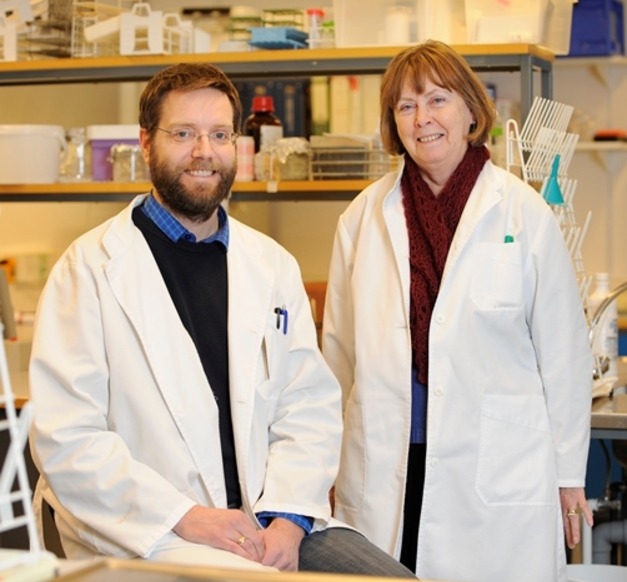Bergljót Magnadóttir, research specialist, and Birkir Þór Bragason, Biologist at Keldur, The Institute For Experimental Pathology, University of Iceland.
The cod is extremely important to Icelanders, therefore, it is tempting to start fish farming cod on a large scale. That is, however, complicated due to a certain flaw in the species’ immune system. Humans and salmon form a powerful immune response to vaccination, protecting them from disease, whereas this attribute is missing in the cod.
Bergljót Magnadóttir, research specialist at Keldur, The Institute For Experimental Pathology, University of Iceland, has dedicated most of her career to research on the cod’s immune system in order to making fish farming viable. “We are currently studying how the immune system develops in the cod and how feeding and other farming components affect the immune system in cod larva,” says Magnadóttir, who is working on this research with Birkir Þór Bragason, Biologist at Keldur, The Institute For Experimental Pathology, University of Iceland.
Birkir Þór Bragason and Bergljót Magnadóttir
“The survival rate when culturing cod larva is low and even in the best of circumstance only 20 – 30% of the larvae reach full growth. There are various reasons for this, e.g. infection. The motivation for this project was the search for the so-called health indicators, that could be used when evaluating circumstances in larva farming,”

“The survival rate when culturing cod larva is low and even in the best of circumstance only 20 – 30% of the larvae reach full growth. There are various reasons for this, e.g. infection. The motivation for this project was the search for the so-called health indicators, that could be used when evaluating circumstances in larva farming,” says Magnadóttir.
According to Magnadóttir, the health indicators can be an immune factor, pentraxin protein or hormone that increases or decreases significantly in the cod’s blood, when stress, illness or other negative factors impact the cod.
Magnadóttir says that scientists The Institute For Experimental Pathology, University of Iceland have previously shown that the cod’s immune system is not fully developed until 8 to 12 week post hatching. “The immune response in cod larvae is based on non-specific immune factors such as bacteria or viral inhibitory agents, phagocytes and others, but not in direct immune response as is known in humans and salmonid,” says Magnadóttir. “It has, however, been proven that with altered feeding or treatment with immune stimulation it is possible to influence certain immune factors in the first larvae age group,” she says.
“We have already explored the expression of so-called pentraxins in the tissue of cod larvae in the first four weeks after hatching; pentraxins are well known health indicators in mammals and various fish species. Further measurements of other factors are being considered and these will stretch over longer periods. The results so far have shown that in cod pentraxins are probably not good health indicators, but another factor, transferrin, seems to be a likely health indicator which could be useful in combating infection in cod larvae.
Magnadóttir says that better knowledge of the immune system of cod larvae, not least how they respond to different feeding methods and other treatment, will lead to larger portions of the larvae surviving and thus the efficiency and viability of larvae growing can be improved. “At the same time we get important basic information about the role of the immune system in developing organisms.”


